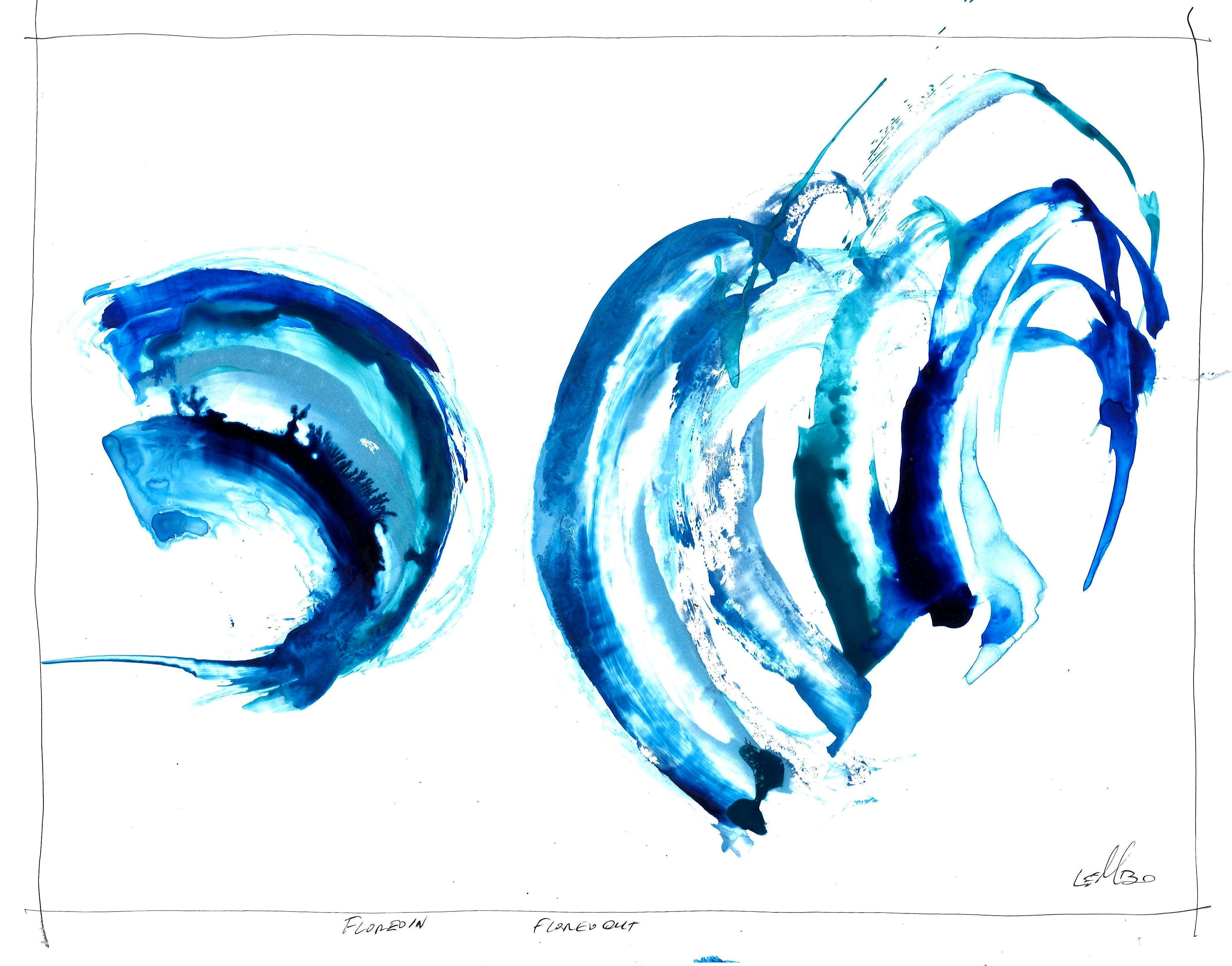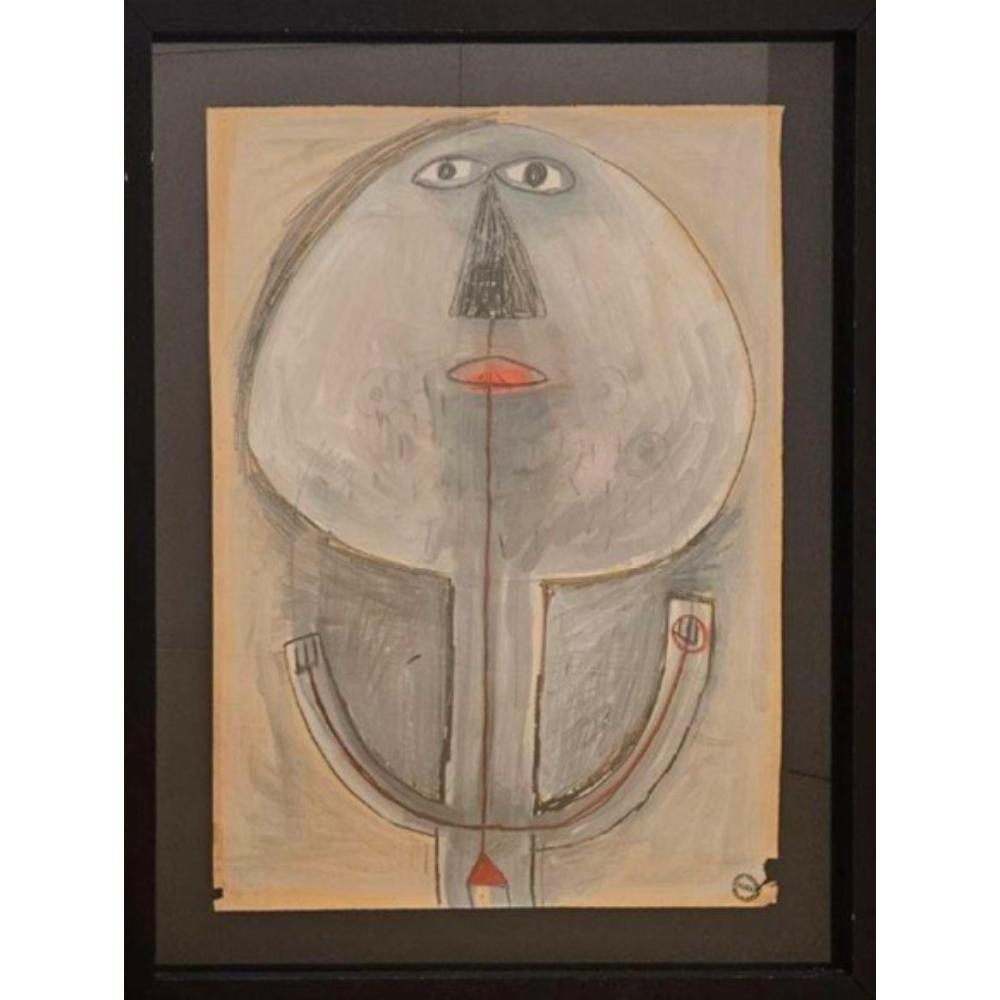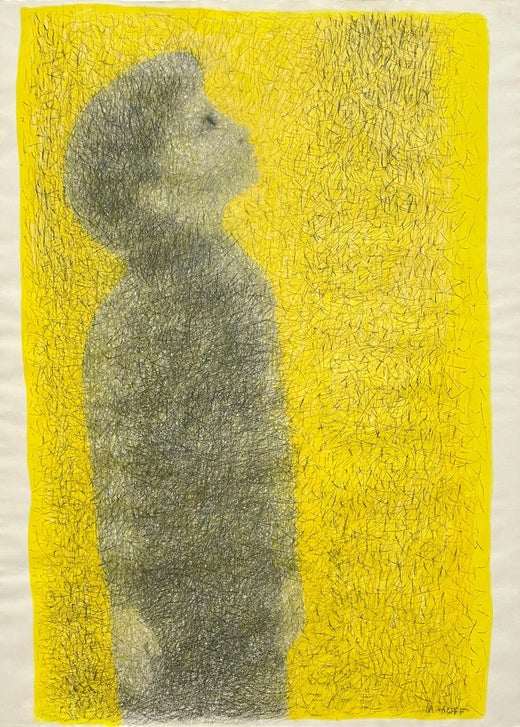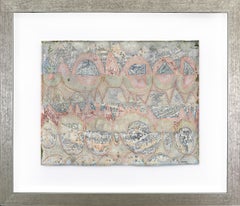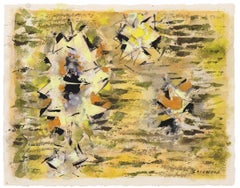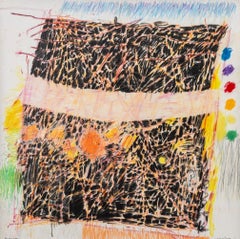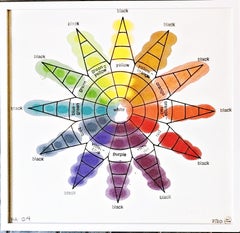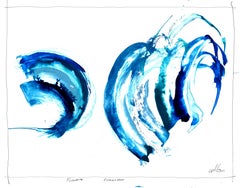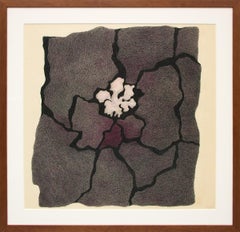
Black Top Pink (Abstract Still Life)
View Similar Items
Want more images or videos?
Request additional images or videos from the seller
1 of 8
Margo HoffBlack Top Pink (Abstract Still Life)1981
1981
$2,350List Price
About the Item
- Creator:Margo Hoff (1912, American)
- Creation Year:1981
- Dimensions:Height: 40 in (101.6 cm)Width: 40 in (101.6 cm)Depth: 0.5 in (1.27 cm)
- Medium:
- Movement & Style:
- Period:
- Condition:very good to excellent vintage condition.
- Gallery Location:Denver, CO
- Reference Number:Seller: DCG-222851stDibs: LU2733112073
Margo Hoff
A prolific artist, Margo Hoff’s exquisite style evolved throughout her career yet was always rooted in the events, people, and places in her life. The human experience was her sole focus, expressed through her eyes alone. Born in 1910 in Tulsa, Oklahoma, Hoff began creating white, clay animals at a young age, giving them to her friends and family. At eleven she contracted typhoid fever and was bedridden for a summer. During her convalescence, she drew and made cutouts, and it was during this time that her bold, artistic imagination came alive. She began formal art training in high school and continued her education at the University of Oklahoma, Tulsa. In 1933 she moved to Chicago and attended the National Academy of Art and the School of the Art Institute of Chicago. Between 1933 and 1960, her Chicago years, Hoff’s work was deeply rooted in a figurative, regionalist style. She often used elements of magical realism, and many of her paintings have dreamlike qualities. She lived, worked, taught, and painted in Europe, Mexico, Lebanon, Uganda, Brazil, and China. She also showed at the Denver Art Museum’s Annual Western Exhibitions in 1952, 54, 56 and 57. In 1957 she showed along-side Colorado modernist Vance Kirkland at the Denver Art Museum’s exhibition, Man’s Conquest of Space. What was once a focus on the representational, her work began to change after 1957 when she saw Sputnik in its orbit around Earth. At that moment, feet firmly placed on the ground, she was able to imagine herself in space, looking down from the cosmos, and what she saw was an abstracted world. She then had the opportunity to peer into an electron microscope where once again she was looking down into what seemed to be a realm of pure abstraction. These two events profoundly changed her perspective and she began to move from figural painting to abstract, geometric collage. In 1960, Hoff moved to New York City and she began creating collages. Placing the canvas on the ground, and working from all sides, she used strips of painted paper and tissue, and later painted pieces of canvas, glued onto the canvas surface, building layer upon layer, shape against shape, “action of color next to stillness of color.” She believed these simplified, abstracted forms held the spirit of the subject in the same way poetry reduces words to their essence. These pieces range from aerial cityscapes, to dancers in motions, to flora and fauna, whittled down to geometric shapes and flat, bold colors. Hoff’s work was exhibited widely throughout the United States and in England, France, Italy, and Lebanon. She passed away in New York City at the age of 98, leaving a rich legacy behind. Margo Hoff’s works are in the collections of: The Art Institute of Chicago, the Brooklyn Museum, the Metropolitan Museum of Art, the National Gallery of Art in Washington, D.C., and the Whitney Museum of American Art.
About the Seller
5.0
Vetted Professional Seller
Every seller passes strict standards for authenticity and reliability
Established in 1979
1stDibs seller since 2013
289 sales on 1stDibs
Typical response time: 13 hours
Authenticity Guarantee
In the unlikely event there’s an issue with an item’s authenticity, contact us within 1 year for a full refund. DetailsMoney-Back Guarantee
If your item is not as described, is damaged in transit, or does not arrive, contact us within 7 days for a full refund. Details24-Hour Cancellation
You have a 24-hour grace period in which to reconsider your purchase, with no questions asked.Vetted Professional Sellers
Our world-class sellers must adhere to strict standards for service and quality, maintaining the integrity of our listings.Price-Match Guarantee
If you find that a seller listed the same item for a lower price elsewhere, we’ll match it.Trusted Global Delivery
Our best-in-class carrier network provides specialized shipping options worldwide, including custom delivery.More From This Seller
View AllWinter Palace, 1960s Mid Century Modern Abstract Watercolor & Acrylic Painting
By Edward Marecak
Located in Denver, CO
Winter Palace is a stunning abstract acrylic and watercolor painting on paper by 20th Century Denver artist Edward Marecak (1919-1993). Created circa the 1960s, the artwork features ...
Category
1960s Abstract Abstract Drawings and Watercolors
Materials
Mixed Media, Acrylic, Watercolor
1950s Abstract Composition: Brown, Orange, Blue, Black Lines, Ink Watercolor Art
By Herbert Bayer
Located in Denver, CO
This captivating watercolor and ink abstract composition by Herbert Bayer (1900-1985) features dynamic shapes in brown, orange, and blue, framed by bold black parallel lines. The wor...
Category
1950s Abstract Geometric Abstract Drawings and Watercolors
Materials
Paper, Ink, Mixed Media, Watercolor
1960s Abstract Painting by New Mexico Modernist Artist - Vibrant Yellow, Orange
By Ward Lockwood
Located in Denver, CO
This vintage 1960s abstract painting by renowned New Mexico modernist artist Ward Lockwood (1894–1963) is an exceptional example of mid-century modern art. The original artwork, crea...
Category
1960s Abstract Expressionist Abstract Drawings and Watercolors
Materials
Mixed Media, Ink, Gouache
Frost Flowers, 1960s Mid-Century Pastel & Ink Drawing in Grayscale Tones
By Edward Marecak
Located in Denver, CO
Frost Flowers is an original circa 1965 mixed media drawing by celebrated Denver-based artist Edward Marecak. Executed in pastel and ink on paper, thi...
Category
1960s Abstract Abstract Drawings and Watercolors
Materials
Oil Pastel, Ink
The Cliff, Abstract Colorado Landscape, 1940s American Modernist Pastel Drawing
By Eric Bransby
Located in Denver, CO
This stunning artwork features an expressive blend of vibrant green, orange, blue, and purple tones, capturing the dynamic beauty of Colorado’s mountainous terrain. Created by renown...
Category
1990s Abstract Abstract Drawings and Watercolors
Materials
Oil Pastel, Pastel, Archival Paper
Willard Ayers Nash Original Abstract Charcoal Drawing, Early 20th-Century Modern
By Willard Ayer Nash
Located in Denver, CO
This original charcoal drawing on paper by influential American modernist Willard Ayers Nash (1898–1942) is a powerful example of early 20th-century abstraction rooted in the Santa Fe...
Category
Early 20th Century Abstract Abstract Drawings and Watercolors
Materials
Charcoal
$3,800 Sale Price
20% Off
You May Also Like
Giotto, Silkscreen with Watercolor and Acrylic on paper, HandSigned 2/3, Framed
Located in New York, NY
Robert Petersen
Giotto, 1989
Mixed Media: Silkscreen with Watercolor and Acrylic on paper
Hand signed, numbered and dated on front A.P 2/3
(Unique variant - each example unique with ...
Category
1980s Abstract Mixed Media
Materials
Screen, Watercolor, Acrylic, Mixed Media
"Percy II"
Located in Astoria, NY
Domenick Capobianco (American, b. 1928), "Percy II", Mixed Media on Paper, 1983, pastels, abstract composition, titled lower left, signed and dated lower right, unframed. 45.25" H x ...
Category
1980s Abstract Expressionist Mixed Media
Materials
Paper, Pastel, Mixed Media
Color Circle and Star, Marker on fabric print Hand signed (ed of only 20) Framed
By Polly Apfelbaum
Located in New York, NY
Polly Apfelbaum
Color Circle and Star, 2004
Fabric Marker and Fabric Dye on Velvet Cotton
Signed and dated in ink by the artist on the front with artist's inkstamp.
Frame Included
Si...
Category
Early 2000s Abstract Geometric Mixed Media
Materials
Fabric, Dye, Ink, Mixed Media, Permanent Marker
Floreos
By Mark Lembo
Located in Boston, MA
About the piece:
Floreo, "Flower" in Spanish, has special meaning in flamenco dance.
Words that describe this piece:outsider, intuitive, blue, monochrome, dynamic, action, flamenco, movement
Artist Biography:
Mark A. Lembo Script M Abstract Art Mark’s dynamic work blurs the distinction between alcohol ink and watercolor - working with dyes, inks, liquid acrylic, liquid watercolor, and other aqueous media; lately, he has been incorporating metallic watercolor and pearlescent ink to his work. He has used canvas, synthetic Yupo™ paper, Yasutomo Mineral Paper, and various watercolor papers. Mark’s journey into the world of creative arts started with the question, “What would Jackson Pollock’s work look like if he had used transparent watercolors?” So, it was out with the pencils, pens, and brushes, and on to the pouring of various aqueous solutions. While mostly self-taught, Mark took a series of classes at the Creative Arts Group, Sierra Madre, CA, under Joe Stoddard, as well as seminars with Robert...
Category
21st Century and Contemporary Abstract Abstract Drawings and Watercolors
Materials
Mixed Media, Watercolor, Synthetic Paper
Sans titre
By Albert Chubac
Located in PARIS, FR
unique piece
mixed media
signed
Category
Late 20th Century Abstract Mixed Media
Materials
Pastel, Mixed Media
Untitled-059 mixed media on paper by John Von Wicht
By John von Wicht
Located in Hudson, NY
This abstract artwork is one of a group of over 100 pieces personally selected by the artist, and gifted to a close personal friend in 1969. Please note that this painting was never ...
Category
1960s Abstract Expressionist Abstract Drawings and Watercolors
Materials
Paper, Mixed Media



